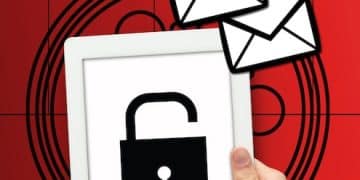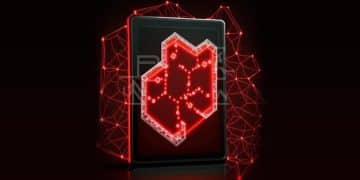Secure Your Inbox: A Beginner’s Guide to Encrypted Email
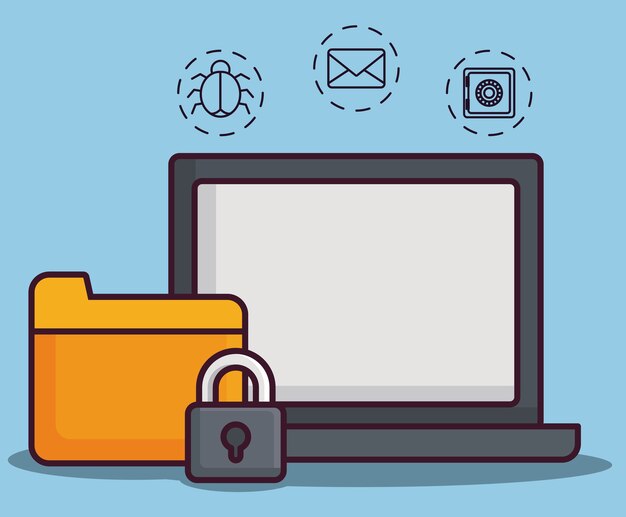
Email encryption is crucial for protecting your digital communications, safeguarding sensitive information from prying eyes and ensuring privacy in an increasingly interconnected world.
In an age where digital footprints are constantly expanding, the privacy of our online communications has become a paramount concern. Understanding how to Encrypt Your Email: A Beginner’s Guide to Secure Communication is no longer just for tech enthusiasts; it’s a vital skill for anyone who values their personal and professional data.
understanding the need for email encryption
Email has become an indispensable tool in both our personal and professional lives. We use it for everything from casual conversations with friends to sharing sensitive financial documents or discussing confidential business strategies. However, many users remain unaware of the inherent vulnerabilities present in standard email protocols, which operate much like sending a postcard – anyone along the route can read its contents. This lack of inherent security makes your communications ripe for interception by malicious actors, surveillance programs, or even curious onlookers.
The landscape of online threats is constantly evolving, with cybercriminals employing increasingly sophisticated methods to gain access to private information. Without encryption, your emails are particularly susceptible to various forms of attack. Phishing attempts, man-in-the-middle attacks, and data breaches are just a few examples where unencrypted emails can lead to significant compromise of your personal data and identity. Consequently, understanding the principles of secure communication is not merely an optional enhancement but a fundamental necessity for digital well-being.
the vulnerabilities of standard email
Standard email systems, primarily those using SMTP (Simple Mail Transfer Protocol), POP3 (Post Office Protocol 3), or IMAP (Internet Message Access Protocol) without additional security layers, transmit data in plain text. This means that if someone intercepts the data packets during transmission, they can read your messages without any difficulty. This vulnerability is especially pronounced when connecting to unsecured Wi-Fi networks in public places, where network snooping is relatively easy for those with even basic technical knowledge.
- Interception risks: Emails can be intercepted at various points, including your device, the email server, or during transit over the internet.
- Data breaches: If an email provider’s server is breached, unencrypted emails stored on it become immediately accessible to the attackers.
- Lack of authentication: Standard email often lacks robust sender authentication, making it easier for spammers and phishers to impersonate legitimate senders.
why privacy matters in digital communication
Privacy in digital communication extends beyond merely hiding information from criminals; it encompasses the fundamental right to control access to one’s personal thoughts, opinions, and data. In an era of pervasive data collection, governments and corporations alike are increasingly interested in harvesting personal data, often without explicit consent. Encrypting your emails acts as a strong defense against such intrusions, ensuring that your private conversations remain just that – private. It empowers you to communicate freely without the fear of your words being scrutinized or exploited, preserving journalistic sources, confidential legal discussions, and even personal health information. This protection helps foster trust and open communication, vital components in a healthy digital society.
Implementing email encryption is a proactive measure that mitigates these risks, moving your communications from a vulnerable “postcard” model to a secure “sealed letter” model. It’s an essential step in taking control of your online security and protecting your digital footprint from unwanted exposure and exploitation.
what is encryption and how it works for email
Encryption is essentially the process of transforming readable information, known as plaintext, into an unreadable format, called ciphertext. This transformation is achieved through complex mathematical algorithms and a key. Think of it like a secret code: without the correct key, the ciphertext remains gibberish, but with the right key, it can be quickly decoded back into its original, understandable form. When applied to email, encryption safeguards your messages both in transit and, in some cases, at rest on servers.
The core concept revolves around cryptographic keys. There are generally two types of encryption relevant to email: symmetric and asymmetric (or public-key) encryption. Symmetric encryption uses a single key for both encryption and decryption, making it fast but challenging for secure key exchange. Asymmetric encryption, on the other hand, uses a pair of keys: a public key, which can be freely shared, and a private key, which must be kept secret. This latter method is particularly suited for email communication because it elegantly solves the key distribution problem inherent in secure messaging across disparate users.
asymmetric encryption in email: public and private keys
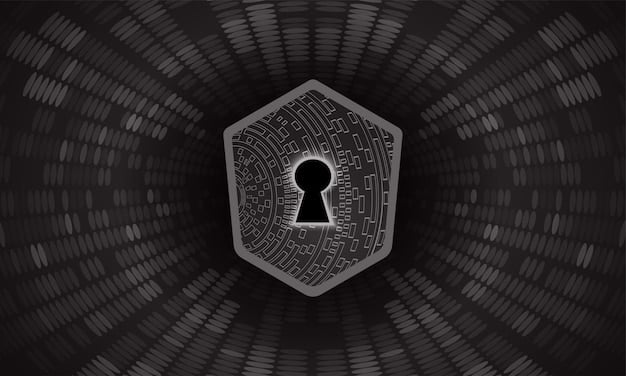
Most modern email encryption, especially user-to-user encryption like PGP/GPG, relies on asymmetric cryptography. Here’s how it typically works: when you want to send an encrypted email to someone, you use their public key to encrypt the message. This public key is freely available and can be shared online or through key servers. Once encrypted with their public key, only their corresponding private key can decrypt the message. This private key is unique to the recipient and is never shared. Conversely, when they want to send an encrypted email back to you, they use your public key to encrypt it, and you use your private key to decrypt it.
- Public key: Can be shared with anyone. Used to encrypt messages or verify digital signatures.
- Private key: Must be kept absolutely secret. Used to decrypt messages that were encrypted with the corresponding public key or to create digital signatures.
end-to-end vs. transport layer encryption
It’s vital to distinguish between different levels of email encryption. End-to-end encryption (E2EE) is the gold standard for privacy. With E2EE, your message is encrypted on your device and remains encrypted until it reaches the recipient’s device. No one, not even your email provider, can read the content of your message during transit. PGP/GPG are prime examples of E2EE technologies. This method provides the highest level of confidentiality because the decryption keys are held only by the communicating parties.
Transport Layer Security (TLS), often referred to as SSL/TLS, is more common but offers a different level of protection. TLS encrypts email as it travels between your device and the mail server, and between mail servers. While this prevents basic eavesdropping over the network, your email provider can still access your messages once they reach their servers. Many popular email services like Gmail, Outlook, and others automatically use TLS by default. This is a significant improvement over unencrypted plain text but does not offer the same level of privacy as end-to-end encryption, as your messages can still be read by the service provider or anyone with access to their servers.
Understanding these distinctions is crucial for anyone looking to truly secure their email communications. While TLS provides a foundational layer of security, end-to-end encryption is necessary for maximum privacy and confidentiality.
common methods for encrypting your email
Navigating the options for email encryption can seem daunting at first, but thankfully, there are several established methods you can adopt, ranging from built-in service features to more robust, third-party solutions. Each method offers varying degrees of security, ease of use, and compatibility. Your choice will largely depend on your specific needs, your technical comfort level, and the level of security your communications demand. From browser extensions to dedicated secure email services, there’s a solution tailored for almost every user looking to enhance their digital privacy without significant upheaval to their daily routine.
pgp/gpg: the gold standard for end-to-end encryption
Pretty Good Privacy (PGP) and its open-source counterpart GNU Privacy Guard (GPG) are widely considered the most secure and robust methods for achieving end-to-end email encryption. They implement asymmetric cryptography, enabling users to encrypt messages directly on their computer before sending them, and decrypt them only on the recipient’s computer. This means that even if a server is compromised, the actual content of your emails remains unreadable. While PGP/GPG offers unparalleled security, it does require a bit of technical setup, including generating key pairs and managing public keys, which can be a barrier for absolute beginners.
To use PGP/GPG, you typically need to install specific software or browser extensions that integrate with your email client. This software manages your cryptographic keys and handles the encryption/decryption process automatically once configured. Establishing a secure communication channel often involves exchanging public keys with your contacts, which ensures that only you and your intended recipient can read your messages. This method is highly recommended for anyone dealing with extremely sensitive information, such as journalists, activists, or legal professionals, where the highest level of confidentiality is paramount.
- Key generation: Create your unique public and private key pair.
- Key exchange: Share your public key with contacts and receive theirs.
- Software integration: Use a PGP/GPG client or extension with your email application.
secure email services: built-in encryption made easy
For those who find the manual setup of PGP/GPG too complex, numerous secure email services offer built-in, often end-to-end, encryption with a much simpler user experience. These services handle the technical complexities behind the scenes, allowing users to send and receive encrypted emails directly through their web interface or custom apps. Providers like Proton Mail, Tutanota, and Mailfence are popular examples that prioritize user privacy and employ strong encryption standards by default. They often include features such as encrypted storage, anonymous sign-ups, and built-in calendar and cloud storage features, all with a focus on security.
The main advantage of these services is their ease of use. You typically just sign up for an account, and the encryption is handled automatically when communicating with other users on the same platform. While some services may offer PGP/GPG compatibility for communicating with external contacts, their primary strength lies in securely communicating within their own ecosystem. This makes them an excellent choice for beginners and those who want robust security without extensive configuration.
encrypted email gateways and plugins/extensions
Another approach involves using email gateways or browser plugins and extensions. Encrypted email gateways sit between your email client and the internet, encrypting outgoing emails and decrypting incoming ones. They can be particularly useful for organizations that want to enforce encryption policies without requiring individual users to manage keys. These gateways transparently handle the encryption and decryption processes, making it seamless for the end-user. However, they may not always provide true end-to-end encryption if the organization administering the gateway retains access to the decryption keys.
Browser plugins and extensions, such as those that support Web of Trust systems or integration with PGP solutions, allow you to encrypt and decrypt messages directly within your webmail interface. These extensions often act as a bridge, making it easier to use PGP/GPG with services like Gmail or Outlook. While offering convenience, users should always ensure these extensions are from reputable sources and have been thoroughly vetted for security vulnerabilities, as they have direct access to your email content.
Choosing the right encryption method largely depends on your user profile and security needs. For maximum privacy, PGP/GPG is the ideal choice, though it requires dedication. For ease of use and good security, dedicated secure email services are highly recommended. And for those seeking a balance or organizational solutions, gateways and reputable plugins offer viable alternatives.
setting up your first encrypted email account
Embarking on the journey to secure your email communications can feel like a significant step, but with a clear guide, it’s a manageable process. Setting up your first encrypted email account is about making informed choices and following a few crucial steps. The process will vary slightly depending on whether you choose a dedicated secure email service or opt for a PGP/GPG solution integrated with your existing provider, but the underlying principles remain consistent: you’re establishing a secure channel for your digital conversations. This foundational setup is key to achieving consistent privacy in your electronic communications.
choosing a secure email provider (beginner-friendly option)
For beginners, opting for a dedicated secure email service is often the simplest and most effective way to start. These providers are built from the ground up with privacy and encryption as their core features, meaning much of the technical heavy lifting is handled for you. Services like Proton Mail or Tutanota are excellent starting points due to their user-friendly interfaces and robust built-in encryption. They offer end-to-end encryption for messages exchanged between users on their platforms and often provide options for sending encrypted emails to external recipients as well. The setup is typically as straightforward as creating a new regular email account.
When selecting a provider, consider their jurisdiction (where their servers are located and what laws apply), their track record on privacy, and any additional features they offer, such as encrypted calendars or cloud storage. Most of these services offer a free tier that provides basic encryption features, allowing you to test the waters before committing to a paid plan. This allows you to experience the benefits of encrypted communication firsthand without a significant initial investment or complex setup procedures.
- Research providers: Evaluate options like Proton Mail, Tutanota, or Mailfence for their features and security policies.
- Sign up: Create an account, often anonymously.
- Explore settings: Familiarize yourself with encryption options and password protection.
gpg/pgp setup: a step-by-step overview
If you prefer a more robust and universally compatible solution, or wish to encrypt emails with your existing provider, setting up PGP/GPG is the way to go. This method requires a bit more technical diligence but offers unparalleled control over your encryption keys. The general steps involve installing a GPG client on your computer, generating your unique private and public key pair, and then integrating this setup with your email client or webmail through an extension.
Initially, you’ll need to download and install a GPG software package relevant to your operating system (e.g., Gpg4win for Windows, GPGTools for macOS). Once installed, you will use a command-line interface or a graphical user interface (GUI) to generate your key pair. This involves creating a passphrase for your private key, which you MUST never forget. After key generation, you’ll configure your email client (like Thunderbird, Outlook, or even webmail with specific browser extensions) to use this GPG setup. This often involves installing an add-on or plugin that allows you to encrypt and decrypt messages directly within your email interface. While it may seem complex, there are numerous online tutorials and communities ready to assist with the setup process, ensuring that even a beginner can successfully implement this layer of security.
Regardless of the method you choose, the goal is to shift your email communications from open “postcards” to securely sealed “letters.” Taking these initial steps to set up an encrypted email account is a significant stride towards greater online privacy and digital security.
encrypting your first email: a practical guide
Once you’ve decided on an encryption method and completed the initial setup, the exciting part begins: sending your first encrypted email. The process can feel a little different from standard email composition, but with a basic understanding, it becomes intuitive. The goal is to ensure your message is unreadable to anyone but your intended recipient, safeguarding your sensitive information from the moment you hit “send.” Whether you’re using a dedicated secure email service or an integrated PGP/GPG solution, the core steps involve consciously applying encryption before dispatching your communication.
sending an encrypted email via a secure service
Using a secure email service like Proton Mail or Tutanota makes sending encrypted emails remarkably straightforward. When composing a new message, if the recipient is also a user of the same service, the encryption is typically automatic and end-to-end. The interface usually indicates that the message will be sent securely, sometimes with a padlock icon or a similar visual cue. You simply compose your email as you normally would, and the encryption happens seamlessly in the background as the message is sent and received. This ease of use is a major draw for these services.
If you’re sending an encrypted email to someone who is NOT using the same secure email service, these platforms often provide an option for password-protected emails. You will compose your message, then typically be prompted to set a password for the recipient. You’ll then need to communicate this password to the recipient through a separate, secure channel (e.g., a phone call or an encrypted chat app). The recipient receives a link to a secure web page where they can enter the password to view your encrypted message. This feature ensures your communication remains private even when crossing service boundaries, albeit with the added step of password sharing.
encrypting with PGP/GPG add-ons in your email client
For those using PGP/GPG with their regular email client (like Thunderbird with Enigmail, or Outlook with a compatible add-on), the process involves a manual step to encrypt the message. After composing your email, you will typically click an “Encrypt” button or select an encryption option from your email client’s toolbar. The add-on will then automatically encrypt your message using the recipient’s public key (which you must have imported into your GPG key ring previously). If you haven’t exchanged public keys with the recipient, the add-on will usually prompt you to do so or prevent the message from being encrypted.
The beauty of PGP/GPG is that it also allows you to digitally sign your emails. A digital signature acts as a verifiable proof that the email genuinely came from you and has not been tampered with since you sent it. This is done using your private key and can be authenticated by the recipient using your public key. While the initial setup of PGP/GPG can be more involved, the act of encrypting and signing individual emails becomes a simple click once configured. This method offers unparalleled control and flexibility in securing your communications, making it the preferred choice for those requiring the highest level of cryptographic assurance for their correspondence.
Congratulations! By successfully sending your first encrypted email, you’ve taken a significant step toward safeguarding your digital conversations. This practical application reinforces the importance of encryption and its role in maintaining your online privacy in an increasingly interconnected world.
best practices and common pitfalls to avoid
While email encryption significantly enhances your digital security, its effectiveness heavily relies on how it’s implemented and managed. Simply enabling encryption isn’t a silver bullet; a holistic approach that combines technical safeguards with disciplined user habits is essential. Understanding best practices and recognizing common pitfalls can prevent inadvertent exposures and ensure your encrypted communications remain truly private. Even the most robust encryption can be undermined by poor key management or social engineering tactics. Hence, a conscious effort to adhere to security protocols is just as important as the encryption technology itself.
strong passphrases and key management
The foundation of strong encryption lies in the strength of your passphrases and the secure management of your cryptographic keys, particularly your private key. For PGP/GPG users, your private key’s passphrase is the ultimate gatekeeper to your encrypted messages. A weak, easily guessable passphrase exposes your entire communication history to brute-force attacks. Instead, opt for long, complex passphrases that combine uppercase and lowercase letters, numbers, and symbols. Ideally, they should be unique and not used for any other service.
Key management involves more than just a strong passphrase. It means safeguarding your private key from unauthorized access. This includes storing it on encrypted drives, never sharing it, and being wary of phishing attempts that try to trick you into revealing it. For those using secure email services, your master password to that service acts as your “private key.” Treat it with the same level of care. Enable multi-factor authentication (MFA) whenever available, adding an extra layer of security that makes it significantly harder for attackers to gain access to your account, even if they manage to compromise your passphrase.
- Create robust passphrases: Long, complex, and unique for your private keys/accounts.
- Enable MFA: Use two-factor or multi-factor authentication for added security.
- Secure key storage: Protect your private key files and backups.
verifying identities and avoiding phishing
Encryption secures the message itself, but it does not inherently protect against social engineering techniques like phishing. A common pitfall is receiving an encrypted email that appears legitimate but is actually from an imposter. While the email content might be secure, the sender’s identity could be spoofed. Always verify the sender’s identity, especially if the email requests sensitive information or contains suspicious links. PGP/GPG offers digital signatures, which provide sender authentication, but even then, vigilance is paramount.
When communicating with new contacts, it’s a best practice to verify their public key’s authenticity through an out-of-band method, such as a phone call or a video chat, before sending sensitive information. This helps establish a “web of trust,” ensuring that the public key you’re using indeed belongs to the person you intend to communicate with. Without proper identity verification, you could inadvertently encrypt a message for an attacker, believing it’s for your legitimate contact. Be suspicious of unsolicited emails, even if they appear to be encrypted, and double-check sender details before clicking links or downloading attachments. Your encrypted email is only as secure as your awareness and diligence against cunning deceptive tactics.
the importance of keeping software updated
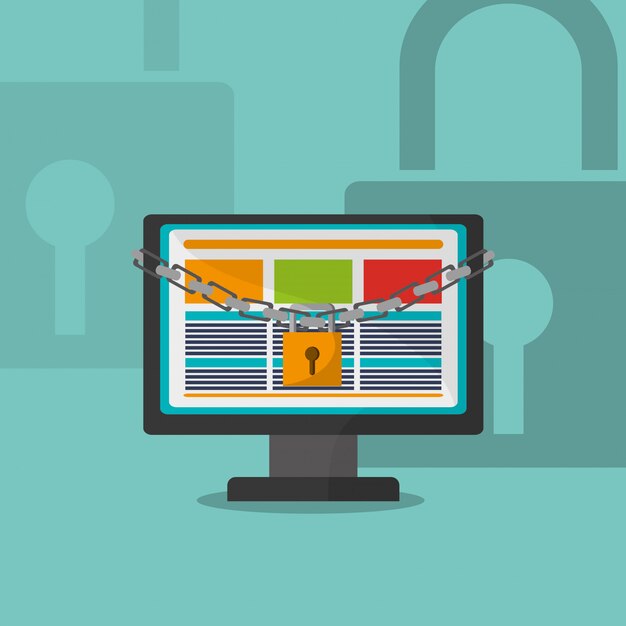
Software vulnerabilities are a constant threat in the digital world. Old or outdated encryption software, email clients, or operating systems can contain unpatched security flaws that attackers can exploit to bypass encryption or gain access to your system. Therefore, consistently updating all your software is a critical best practice. These updates often include patches for newly discovered vulnerabilities, meaning that by not updating, you leave yourself exposed to known weaknesses. This applies not only to your email client and encryption tools but also to your operating system, web browser, and any other relevant applications.
Make sure automatic updates are enabled whenever possible, or regularly check for and install updates manually. This proactive approach minimizes the window of opportunity for attackers to exploit known software flaws. Neglecting updates is a common pitfall that can compromise even the most diligently set up encryption. A secure communication strategy involves a continuous commitment to maintaining the integrity of all software systems involved, ensuring your digital communications remain safeguarded against evolving threats.
the future of secure email communication
As technology progresses and our reliance on digital communication deepens, the landscape of secure email continues to evolve. The future promises advancements that aim to make encryption more accessible, seamless, and integrated into our daily digital lives. While the core principles of cryptography remain constant, the methods of implementation are constantly being refined to combat ever-sophisticated cyber threats and meet the demand for greater privacy from a wider audience. This ongoing development ensures that secure email communication remains a viable and effective tool for protecting our digital interactions, adapting to new challenges and user expectations. The push is towards a future where strong encryption is not an optional extra, but an inherent default.
emerging technologies and standards
Several emerging technologies and evolving standards are set to shape the future of secure email. One significant area of development is post-quantum cryptography, which aims to develop encryption algorithms resistant to attacks from future quantum computers, a potential threat to current cryptographic standards like RSA and ECC. While quantum computers capable of breaking modern encryption are still theoretical, research is already underway to proactively secure communications for decades to come. This ensures a long-term solution for data integrity and confidentiality against future computational power.
Another area of focus is the push for broader adoption of email authentication standards like DMARC, DKIM, and SPF. While not encryption technologies themselves, these standards help verify sender identity and prevent email spoofing, reducing the effectiveness of phishing and spam. Wider implementation across email providers would create a more trustworthy email ecosystem. Additionally, efforts to standardize and simplify end-to-end encryption protocols are ongoing, with the goal of making them easier for average users to implement without requiring extensive technical knowledge.
mainstreaming encryption: what to expect
The trend is clear: encryption is moving from a niche security measure to a mainstream expectation. We can anticipate email services to increasingly offer built-in encryption by default, much like many websites now default to HTTPS. This means less manual configuration for users and a higher baseline of privacy for everyone. User interfaces for secure email services are likely to become even more intuitive, potentially integrating seamlessly with existing contact lists and communication habits, making the secure option the easiest option.
Furthermore, increased awareness campaigns and educational initiatives are likely to empower more users to understand the importance of email encryption. As privacy breaches become more frequent and public, demand for secure communication tools will only grow. This growing demand, coupled with technological advancements, will push email providers to prioritize privacy features, making robust encryption a standard rather than an exception. The future of secure email communication looks promising, aiming for a world where personal and professional correspondence is private by design, not by painstaking configuration.
| Key Point | Brief Description |
|---|---|
| 🔒 End-to-End Encryption | Ensures only sender and recipient can read the message. |
| 🔑 PGP/GPG Importance | A robust method for asymmetric key encryption in email. |
| 🛡️ Secure Email Services | Providers like Proton Mail simplify encryption for users. |
| 🚨 Avoid Common Pitfalls | Use strong passphrases and consistently update software. |
frequently asked questions about email encryption
Email encryption is crucial because standard emails are often sent as plain text, making them vulnerable to interception and surveillance. Encryption protects your sensitive information from unauthorized access, ensuring privacy, secure communication, and safeguarding against data breaches by cybercriminals and other entities.
TLS (Transport Layer Security) encrypts email traffic during transit between servers, but your email provider can still read your messages. End-to-end (E2EE) encryption, like PGP/GPG, encrypts messages on your device and decrypts them only on the recipient’s device, ensuring only the communicating parties can read the content.
PGP/GPG can be more complex for beginners due to the initial setup of key pairs and integration with email clients. However, dedicated secure email services provide a much simpler user experience with built-in encryption, handling most technical aspects automatically, making them more accessible for those new to email encryption.
Yes, you can. While Gmail and Outlook use TLS for transport encryption, you can add end-to-end encryption by using third-party browser extensions or email client add-ons that support PGP/GPG. This allows you to apply strong application-layer encryption on top of the provider’s default security, enhancing your privacy.
The most important best practices include using strong, unique passphrases for your private keys and accounts, enabling multi-factor authentication, verifying the identity of recipients (especially when exchanging keys), and regularly updating all your software to patch security vulnerabilities. Vigilance against phishing is also crucial.
conclusion
In an increasingly transparent digital world, taking control of your online privacy is not just advisable; it’s imperative. Learning to Encrypt Your Email: A Beginner’s Guide to Secure Communication is a fundamental step toward safeguarding your personal and professional exchanges. While the initial setup might seem daunting, the investment in time and effort pales in comparison to the immense value of protecting your sensitive information from unauthorized access. By understanding the basics of encryption, choosing appropriate tools, and adopting sound best practices, you empower yourself to communicate freely and securely, knowing your words are shielded from prying eyes. The future of communication trends towards robust, default encryption for all, and by embracing these technologies today, you’re not just securing your inbox; you’re actively participating in shaping a more private and secure digital future.

